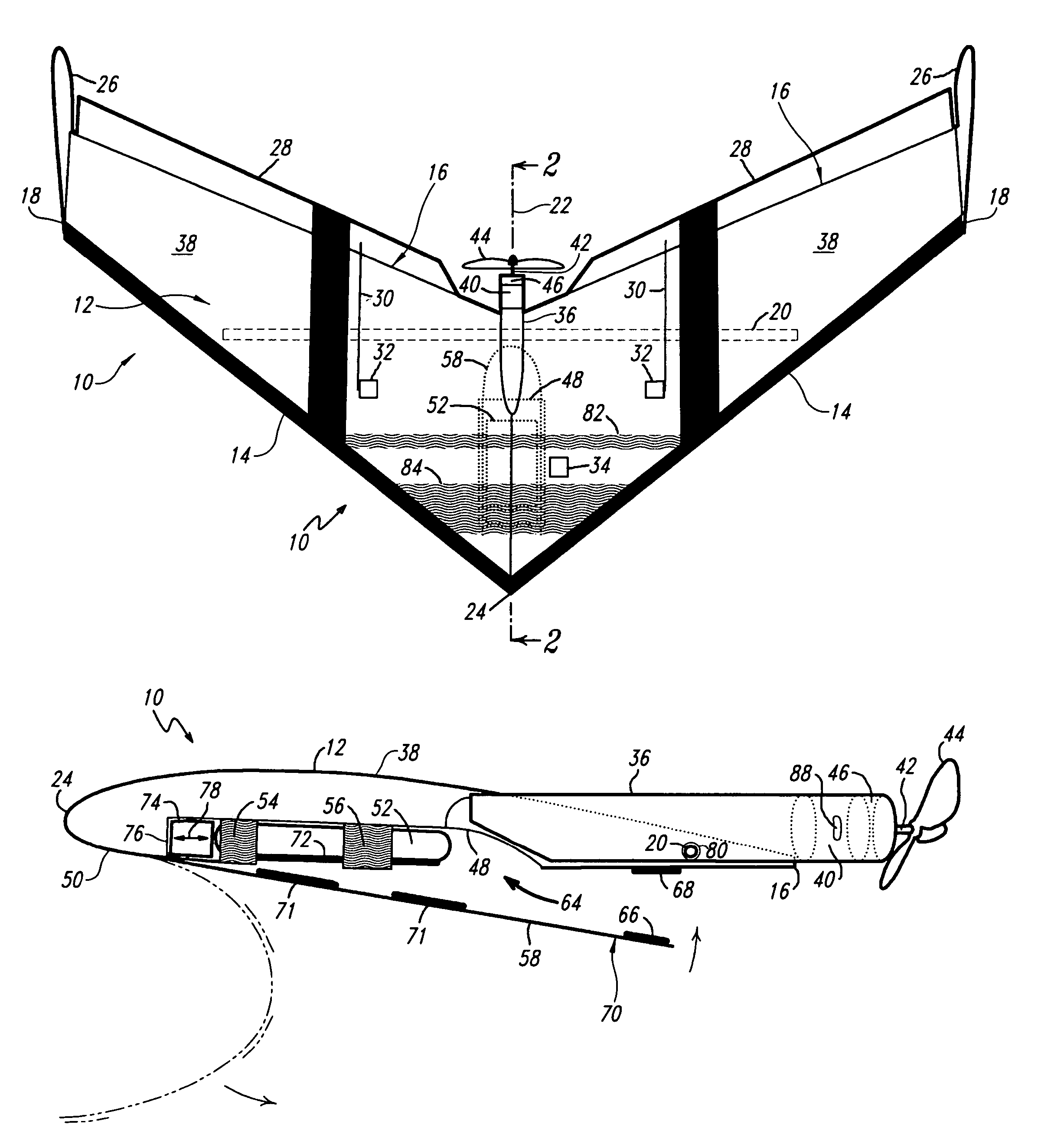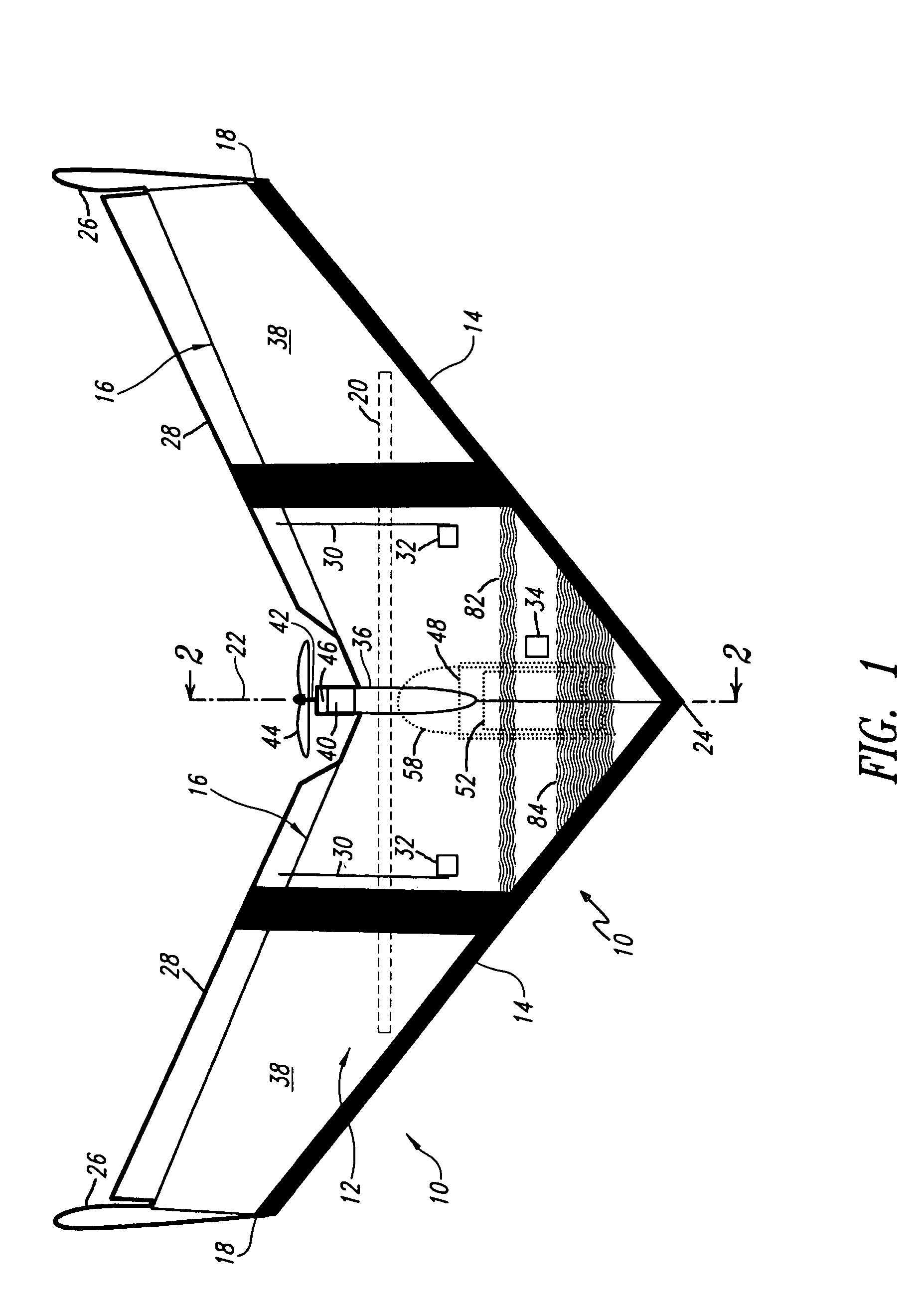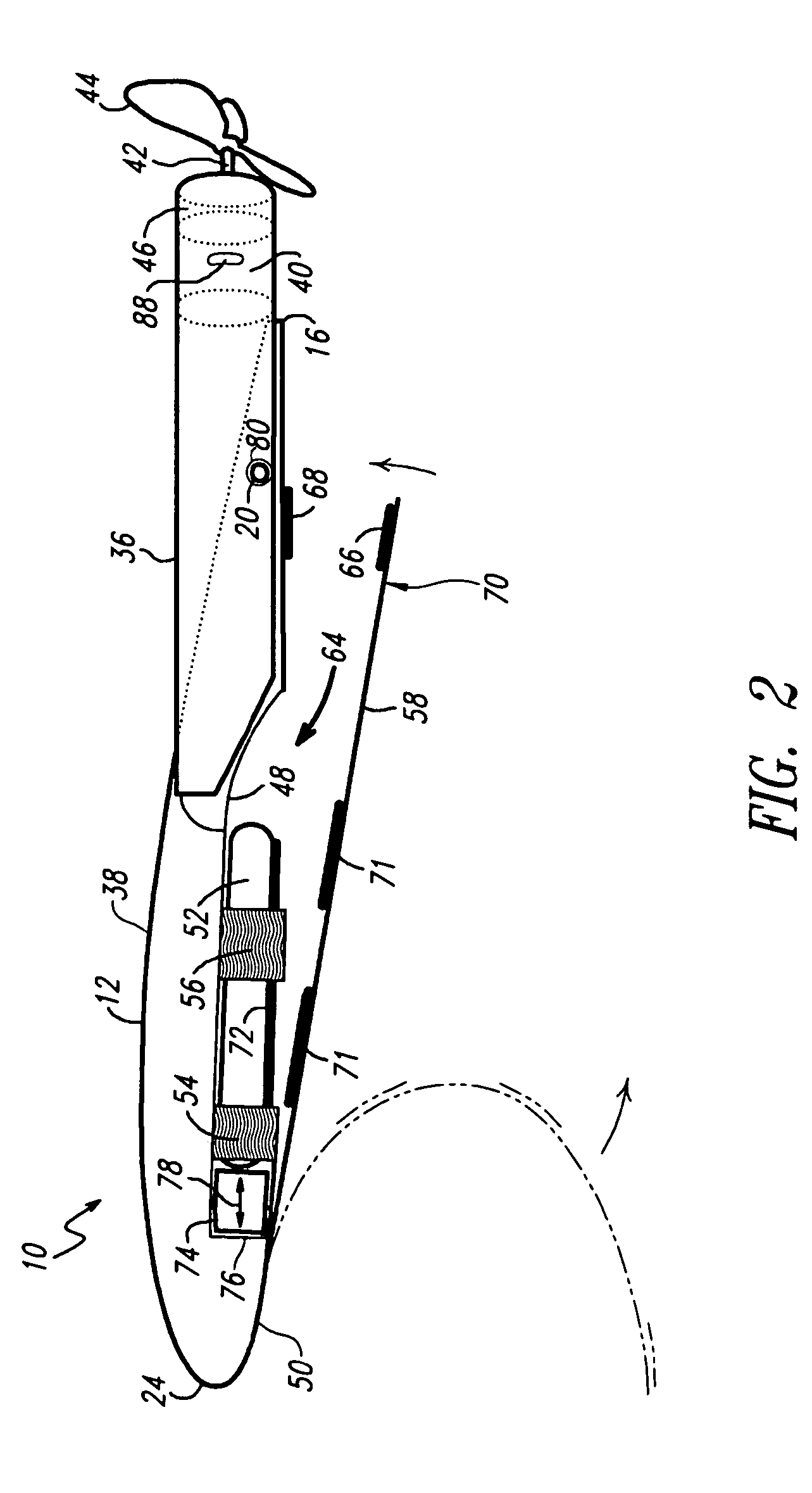Electric powered flying wing toy
a technology of electric motors and flying wings, which is applied in the direction of toy aircraft, remote control toys, transportation and packaging, etc., can solve the problems of inconvenient positioning, inconvenient use, and inability to use landing gear, so as to improve the gliding efficiency of the flying wing body, reduce the audible noise, and prevent the propulsion system from overheating
- Summary
- Abstract
- Description
- Claims
- Application Information
AI Technical Summary
Benefits of technology
Problems solved by technology
Method used
Image
Examples
Embodiment Construction
[0026]Generally, the present invention utilizes a form-fitting motor enclosure, allowing the motor and propeller to extend rearward, while minimizing interference of air flow between the aircraft nose and pusher propeller. The motor enclosure extension combines with the extension of the propeller shaft to position the propeller away from the wing trailing edges.
[0027]The net propeller extension improves propeller thrust efficiency and reduces audible propeller noise. Improved thrust efficiency increases aircraft climb rate at full throttle, and allows the operator to continuously cruise the flying wing at lesser throttle, thereby extending flight time before the battery becomes discharged.
[0028]Particularly for an aircraft that is cruising normally (i.e., non-inverted), airflow tends to delaminate (break up into turbulent airflow) on the top wing surface first, in part because the air pressure is lower on the top wing surface than it is on the bottom wing surface. The flying wing bo...
PUM
 Login to View More
Login to View More Abstract
Description
Claims
Application Information
 Login to View More
Login to View More - R&D
- Intellectual Property
- Life Sciences
- Materials
- Tech Scout
- Unparalleled Data Quality
- Higher Quality Content
- 60% Fewer Hallucinations
Browse by: Latest US Patents, China's latest patents, Technical Efficacy Thesaurus, Application Domain, Technology Topic, Popular Technical Reports.
© 2025 PatSnap. All rights reserved.Legal|Privacy policy|Modern Slavery Act Transparency Statement|Sitemap|About US| Contact US: help@patsnap.com



